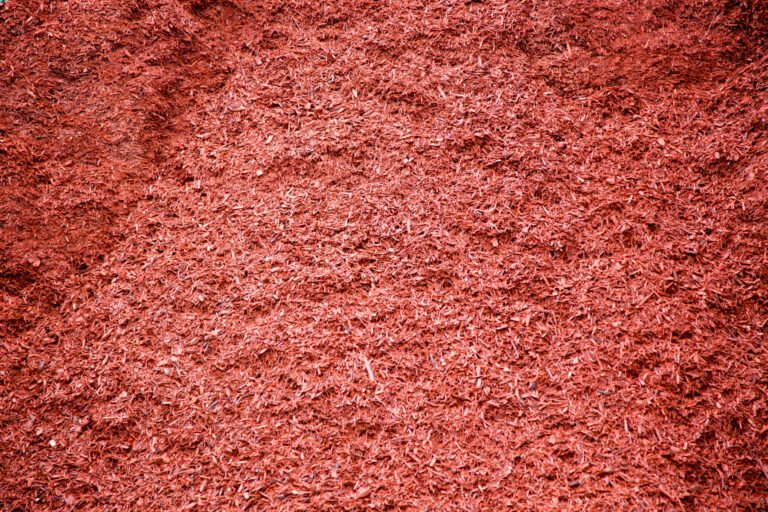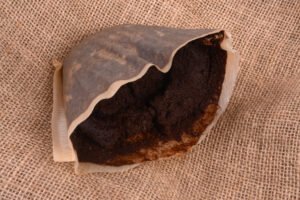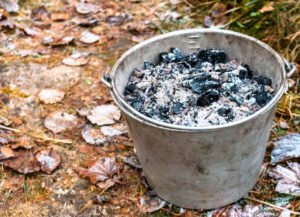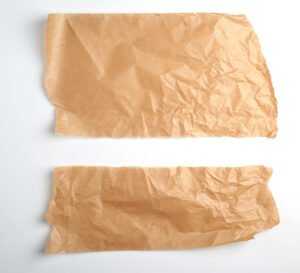Everyone wishes to have a healthy garden with a dash of beauty. Though plants have their own aesthetic, complimenting them with some dyed mulch might seem a nice idea. But is colored mulch safe for them? And can you compost dyed mulch? Let’s find out!
Key Takeaways
- Dyed mulch can be composted with the proviso that the source of the dye and wood is natural and untreated.
- Dyed mulch breaks down slower than regular mulch. Thus, it’s best to compost it via regular hot or cold composting methods.
- Avoid adding artificially dyed mulch to the compost as it might contain toxic chemicals harmful to the soil.
- Adding mulch compost to the soil improves soil moisture retention and structure. Want to learn more about composting dyed mulch? Read on!
What is Dyed Mulch?
Dyed Mulch is the mulch that is colored. It is made by grinding the dry wood waste into chips. The chips are dyed with a water-based solution to impart color. Examples are old pellets, old decks, or crates.
Colored or dyed old mulch is either made of harmless organic dyes or toxic chemicals. The latter must be avoided while composting.
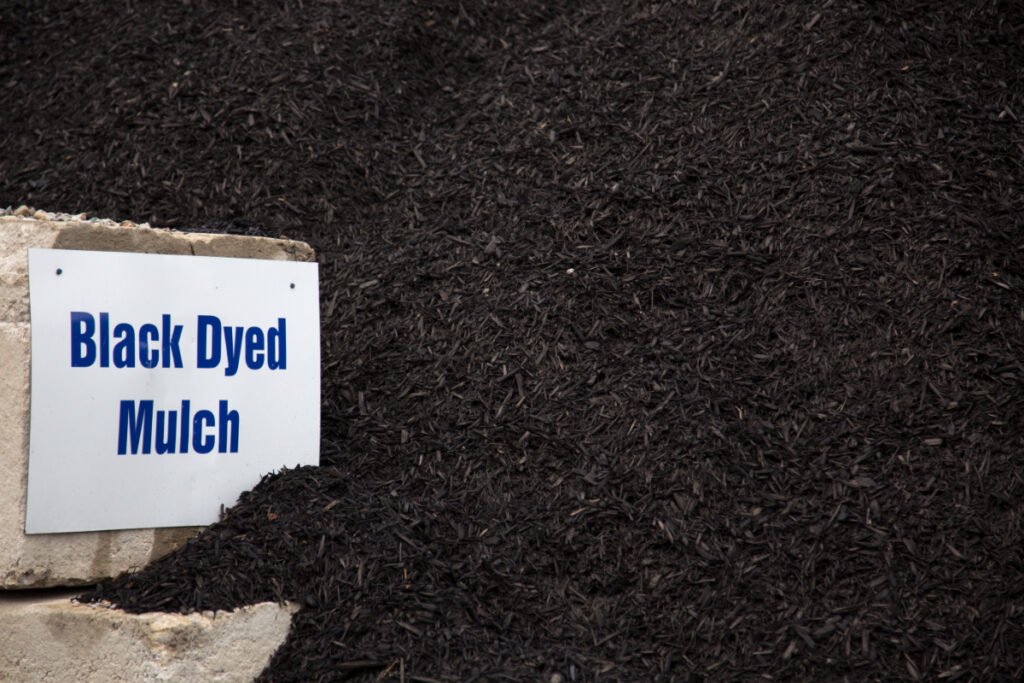
Harmless Dyes for Wood Mulch Include:
- Iron Oxide Dyes: It is used to make red mulch.
- Carbon Dyes: It is used to make black or dark brown mulch. The black-dyed mulch helps suppress weeds.
- Vegetable-Based Dyes: Organic dyes that are used to impart color.
Since the composition of dyes is organic, it still does not guarantee that the dyed mulch is entirely safe for plants. Here comes the wood in action.
According to the University of Massachusetts, most red-dyed or black-dyed mulch is recycled wood. However, it is essential to know if the recycled wood is treated with any chemicals or used for a purpose that involves chemicals.
Some dyed mulches might contain CAA (chromated copper arsenate), which raises the level of arsenic in the soil. It was banned in 2002 but is still used in some mulches.
How to Compost Dyed Mulch?
Since a nutritious dyed mulch devoid of harmful toxins is as good as regular mulch, composting dyed mulch is as simple too.
The best way to compost naturally colored mulch is regular hot or cold composting in a compost pile.
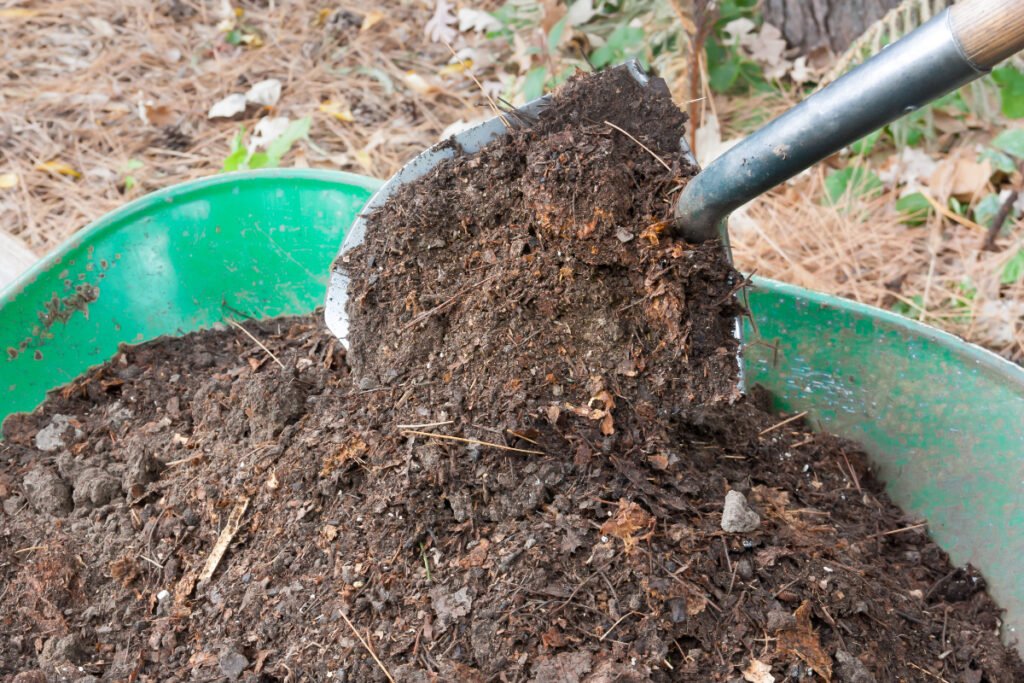
Materials You Need:
- Dyed Mulch
- Brown Carbon-rich materials (sawdust, shredded paper or cardboard, twigs, yard waste, pine needles, etc.)
- Green Nitrogen-rich materials (grass clippings, food scraps, vegetable, and fruits peelings, eggshells, tea bags, etc.)
- Water
- Nitrogen Fertilizer
Steps to Compost Dyed Mulch
Step 1: Start a Pile
Build a separate pile for composting dyed mulch. Gather the required material, i.e., dyed mulch, brown material, green material, shovel or pitchfork, etc.
Step 2: Apply a Layer of Branches
Add some dry, broken tree branches at the bottom of the pile.
According to the University of Missouri, branches facilitate air circulation through the base of the compost pile. However, their decomposition rate is comparatively slower than other materials.
Step 3: Add a Layer of Browns
Apply a layer of brown materials over the branches. This material is the food source for composting microbes.
Step 4: Add a Layer of Greens
Apply a layer of green organic materials like grass clippings, kitchen scraps, etc.
Step 5: Maintain the Moisture
Wet the layers to make the pile moist. This also helps maintain the pile’s moisture level and the soil temperature.
Add enough water only to make the compost pile moist and not soggy.
Step 6: Add Dyed Mulch
Add dyed fresh mulch and wood chips into the pile.
Step 7: Add Source of Nitrogen
Add Nitrogen fertilizer to the pile. This will accelerate the composting process.
Step 8: Repeat the Layers
Add green and brown material alternatively, and sprinkle water.
Step 9: Add Finished Compost (Optional)
While this is optional, an additional layer of finished compost can increase the advantageous microorganisms in a pile, accelerating the process.
Step 10: Mix the Materials and Turn
Mix all the materials using a pitchfork. You must turn the pile every two weeks to fasten the decomposition.
Decrease the frequency of turning the pile in winter months as the heat can escape and slow the composting process.
So this is how you can compost dyed mulch. Since different dyed mulch breaks down at different rates, your mulch compost might take 1-2 years to get ready!
Benefits of Composting Dyed Mulch
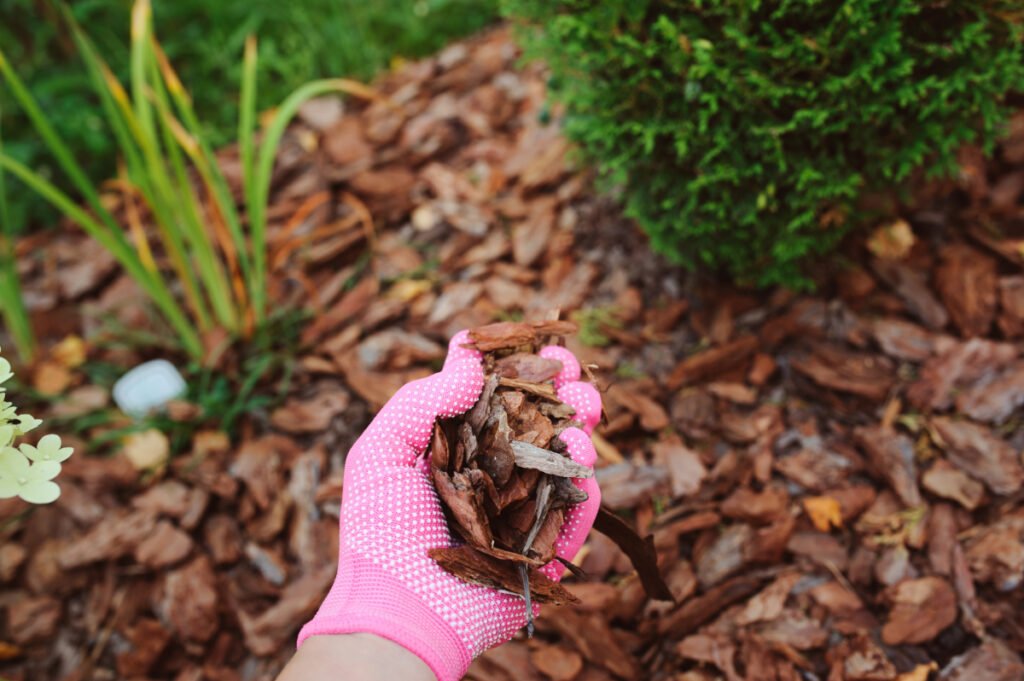
- Provide Nutrients: Composting dyed mulch will provide essential nutrients to the soil. But that is only true if the dyed mulch does not contain construction or demolition materials.
- Retain Soil Moisture: Dyed mulch helps maintain the soil moisture, enhancing the soil’s water infiltration and water retention capacity.
- Improve Soil Structure: Colored mulch improves the soil structure and avoids soil erosion.
Construction and demolition of recycled materials will contain CAA, which is unsuitable for compost.
Disadvantages of Composting Dyed Mulch
- Kill Beneficial Microorganisms: Certain chemicals in colored mulch might pose a threat to good soil bacteria, fungi, insects, and earthworms.
- Slow Break Down: Composting dyed mulch might take a lot of time since the decomposition rate is slow.
- Soil Contamination: Toxins and chemicals in dyed mulch leach into the soil and hamper plant growth. Even mulch that doesn’t have long-lasting chemicals can still affect young plants.
- Water Contamination: Composting dyed mulch with harmful chemicals can seep into the ground, contaminate groundwater, or threaten aquatic life if run off into the water.
- Expensive: The actually beneficial and organic dyed mulch will be heavy on the pocket. Cheap dyed mulch might contain heavy metals like chromium and copper and harm plants.
Clearly, the disadvantages take the upper hand, and colored mulch might not be the best mulch to compost. Therefore, it is recommended to compost organic mulch instead of a colored one.
Difference Between Natural Mulch and Dyed Mulch

| Natural Mulch | Dyed Mulch |
| Made directly from trees (like cedar pines) | Made from recycled wood (like crates, decks, demolition, and construction materials) |
| Blends subtly in natural surroundings | Attractive but provides an artificial look |
| Over time, it loses color and turns gray | Holds color longer than natural mulch |
| Pocket-friendly | Expensive |
| Healthy for plants and surroundings | Might be toxic to plants, animals, and humans |
Well, now you can judge which type of mulch will be better, right?
One of the ways to ensure the dyed mulch is safe is to look for the MSC Logo (Mulch and Soil Council) on the bag of dyed mulch.
Precautions To Take While Composting Dyed Mulch
If you’re still determined to compost the dyed mulch, here are certain precautions you should take.
- Avoid Using Dyed Mulch for Edible Plants: Though not all dyed mulch contains harmful chemicals, however, as a precaution, avoid using them for edible plants.
- Keep Pets Away: Our pets are naive enough not to know what to stay away from. Therefore, it is crucial to keep them away from the area of application of dyed mulch, as they can inhale or ingest the chemicals present.
- Wear Hand Gloves While Using Dyed Mulch: As a precautionary measure, wear hand gloves while handling dyed mulch. If the mulch contains toxic chemicals, you can protect yourself from coming in direct contact with it.
Hence, knowing the pros and cons will help you make the best decision for your garden. After all, happy plants make a happy you!
How to use dyed mulch for plants?
You can apply the dyed mulch directly to the topsoil or compost it in a regular compost pile.
Can we use dyed mulch in a vegetable garden?
It is not recommended to use dyed mulch for edible plants since colored mulch might contain toxic chemicals which are harmful to consume.
Is colored mulch toxic to plants?
Colored mulch can be toxic if natural dyes are not used, or the wood is treated with harmful chemicals.
Can we use rubber mulch instead of dyed mulch to make the garden attractive?
Rubber mulch can also contribute to enhancing the beauty of the garden. Therefore, you can use rubber mulch instead of dyed mulch for aesthetic appeal. However, rubber mulch is a form of inorganic mulch.
Now, you thoroughly understand the process of composting dyed mulch. So what are you waiting for? Apply those skills, and make some healthy compost for your garden.
However, if you’re planning to plant directly into compost, you mustn’t miss some major concerns!
HAPPY GARDENING!
